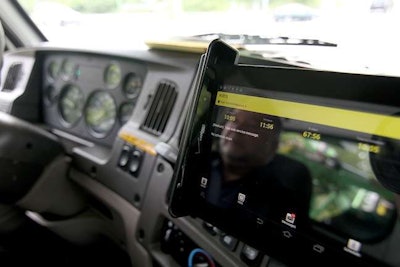
Second to that — and more pressed by comments by industry trade groups like the Owner-Operator Independent Drivers Association and the American Trucking Associations — was the need for accountability of shippers and receivers who can cause or push drivers to violate federal safety laws.
The comment period on the proposed rule ended Aug. 11, 90 days from its publication in the Federal Register.
As noted in prior coverage of public comments leading up to the Aug. 11 deadline, the burden of proof of coercion will be placed on the driver making the claim, which was a point of contention with several commenters.
Likewise, it is a point of contention with OOIDA, who also takes issue with what it calls an unclear and overly narrow definition of “coercion.”
The definition should be broader and include more specifics on all negative economic impacts that carriers, shippers, receivers or brokers can use to threaten or harm drivers, as well as more specifics on conditions that would cause drivers to refuse or wish not to drive, OOIDA wrote in its comments.
OOIDA also says the agency must be more specific about what evidence drivers can provide to prove coercion.
The group, however, did applaud the agency for making an attempt to “address the causes of violations…rather than merely interdicting violations after they have occurred,” it writes.
ATA made similar suggestions in its formal comments, but from the other side of the argument: Without a clear definition, drivers will be able to abuse the rule’s protections, ATA says.
ATA suggests FMCSA include a requirement in the rule that drivers make a written objection at the time of the incident that includes what regulations would be violated if they proceeded to drive.
ATA also wants the definition of coercion to be more clearly defined.
It, too, however, said the agency’s attempt to take into account shippers, receivers and intermediaries and the “actions that force driver and carrier violations” is welcomed.
**
Driver commenters again emphasized how the hours-of-service rule changes in 2013 are intertwined with this rulemaking, as they have with other proposed rulemakings since the implementation of the rule last year.
Commenter Mark Wieland, for instance, said the hours rule’s “inflexibility” causes coercion. It also puts drivers in unsafe areas when they run out of hours, he wrote: “How many more drivers need to die on some dark street at 2 a.m. before you see it?” Wieland writes. “Do you really think taking a 10-hour break on an Atlanta downtown street because the 14-hour rule elapsed while unloading equals rest? Or would it be better for the driver to head up the road where he can find a shower and well-lit parking?”
Commenter Grey Kiroff made a similar point. “Coercion is directly correlated to the current form of HOS,” he wrote.
Others, however, harped on accountability of shippers, receivers and brokers and their role in causing drivers to violate federal rules.
“Time has come to put pressure on shippers, receivers and brokers. They are engaged in the same type of business, but don’t [deal with the] burden of regulations over carriers and truck drivers,” wrote an anonymous commenter.
Commenter Erika Riker said drivers and carriers are being held accountable when many times they have “very little control over it…. I agree with directing the consequences in the form of fines to shippers and receivers. Drivers are powerless on so many levels. The treatment of drivers at some facilities is shameful and degrading, I have seen too many drivers pushed around and purposely detained with no recourse and when this happens day after day it works on a person’s state of mind in a very negative way.”
Click here to read prior coverage of the coercion rule comments.
Here’s a list of the other trucking-related trade groups who filed formal comments. Click each to read the comments:
Transportation Intermediaries Association











